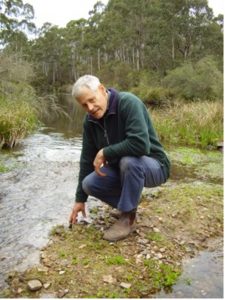 Robert Gourlay, Managing Director and Chief Scientist Resonate Research Pty Ltd www.eric.com.au, www.meawater.com, www.phion.com.au
Robert Gourlay, Managing Director and Chief Scientist Resonate Research Pty Ltd www.eric.com.au, www.meawater.com, www.phion.com.au
This paper examines the evidence of primary water or Earth generated water as a major source of water supply for the future needs of humans and animals. There is a major issue with perceptions held by some public scientists, bureaucrats, environmentalists and sceptics that primary, Earth-generated water (as a continuous supply of water from the Earth’s crust) is unproven. Dogma says that our water exclusively originates from the hydrological cycle, but this begs the question: how did the Earth kick-start the hydrosphere and this cycle?
September 2019
Introduction
There is a looming global water and food security crisis, particularly for farming and urban areas. Rural areas in most countries are under pressure because they do not have access to the large surface water storages of major cities and regional towns. While some irrigation areas will manage on limited supplies, many dryland farmers have had their groundwater supplies cut, and this water is often the main source of water for their enterprise. Most people rely heavily on surface water supplies that will always be limited, and perhaps become increasingly polluted.
Undoubtedly, nations must become more efficient at water use and minimise water wastage. Also, there is a pressing need to make water more potable (drinkable) and therefore make existing water supplies more sustainable and useable. These strategies alone will not secure the water reserves that the economies need for nation building. However, there is a source of groundwater that is available for all and yet is not part of national, state and local government plans.
About 4 billion people globally, depend on groundwater for drinking and food production. However, this shallow groundwater is being depleted or contaminated at an unprecedented rate. The world is on the edge of a huge, and little understood, catastrophe.
There is a need for a new perspective and understanding about the groundwater resources on the Earth and methods to tap into groundwater resources that are currently not been used. These untapped resources are potentially greater than the ocean volume and confined within the Earth’s crust. Importantly, there are unique Earth mapping data sources from satellites (radar and reflectance) and airborne sensing (magnetic, gravity, radiometric/gamma-ray) that provide a means to locate deep groundwater sources that are rarely used by government agencies to locate these groundwater sources (see pages 16-17).
A 2005 book (A Voyage of Discovery) by Emeritus Professor Lance Endersbee AO (former Dean of Engineering and Pro- Vice Chancellor of Monash University, Victoria, Australia) provides an impressive outline of Earth Generated Water and Expanding Earth science, and particularly the misconceptions in current water science about the origins of water on Earth. Before his retirement Lance was a world authority on rock behaviour and tunnelling, a former president of the Institution of Engineers Australia, and a recipient of its highest award, the Peter Nicol Russell Memorial Medal. He had worked on the Snowy Mountain hydroelectricity scheme and was awarded the Order of Australia Medal (AO).
I met Lance at his home in about 2004 and consequently presented jointly with him at a book launch in Sydney. I was interested in his ideas about Earth generated water and the expanding Earth. He was a maverick and intellectual giant among academics. He was never afraid to challenge existing paradigms in public or academic science, and a critic of the peer review system that he said was a control mechanism for conventional science beliefs, and an instrument to limit the exploitation of new science ideas and innovation outside of the peer hierarchy. In this respect he was a great mentor to me, and I leave you with his comments below about his well- researched ideas about how the Earth functions. The forward to Endersbee’s book is below.
Forward to A Journey to Discovery
It is appropriate for me (Lance Endersbee) to explain how I came to write this book.
In 1999 I attended a meeting with the Federal Inland Development Organisation in Charleville, in Western Queensland, in Australia. I presented a paper on my proposals for new national Infrastructure in Australia, and related prospects for national development. A paper which followed mine was about the Great Artesian Basin of Australia. This Basin is the largest Artesian basin in the world.
We were told that when the artesian waters were discovered in the 1880’s, water gushed from the early bores as great fountains, often rising to 30 meters or more above the ground. In a few years, many water bores were drilled throughout the Basin, some to depths of greater than 100 meters.
The total yield of all waters from the basin reached a maximum in 1917. The total yield has declined ever since. Many bores have run dry, and many more new bores have been drilled. Most bores today are running free into open drains to provide water for cattle. Well over 98 percent of the water is lost to seepage and evaporation.
The presentation at this meeting included some diagrams of which had been prepared by the Queensland Government, to show how the artesian basin works, and how, they believed, the underground waters were recharged from surface rainfall. The charts included a cross section of the strata in the Basin, and a plan showing the direction of flow of water through the strata from the presumed intake areas of exposed sediments on the eastern edge of the Basin.
I could see that this official explanation of the operation of the Basin showed conditions which were, in fact, physically impossible. But what I found most disturbing was the fact that the professionals involved believed it all. It was an act of faith on their part, and they defended their position by reference to world practice and world authority.
I subsequently found that the same pattern of decline of groundwater yields was occurring in many countries around the world. The world’s wells were running dry. Well over half of the people of the world depend on groundwater for part or their water supply, in India, China, Bangladesh, Pakistan, the Middle East, North Africa, Europe, North America and Mexico.
Sadly, the world’s groundwater specialists share the same convictions as their Queensland colleagues regarding recharge of deep ground water from surface rainfall. The textbooks on groundwater hydrology are based on this common assumption. Similarly, the many recent books on the environment do not make any distinction at all between surface waters and groundwater, despite the serious problems of decline in groundwater supplies.
In reviewing many recent and historical books and papers on groundwater, I concluded that there has been more than a century of error. But this led to some serious and profound questions. How was it possible for so many professional geologists and engineers around the world, to remain in error for so long, and in circumstances where much of the evidence over the years had contradicted their assumptions? Furthermore, why was it that there had been no debate whatever on the subject? A major factor must have been that the separation and increasing specialisation of the disciplines which limits exposure and debate. But a significant cause was simply the enormous power of the fashionable view, and most disturbingly, the power of the leaders of the scientific fashion to suppress debate. It is called peer review.
I embarked on my own voyage of discovery. It soon became evident the same misconceptions about the origin of artesian waters and thermal springs applied to the origin of petroleum and natural gas. And furthermore, there was equally strong suppression of ideas and learned debate about the subject. And then I noted that the same errors of understanding seemed to apply to the matter of climate change.
This book is a report of my enquiries, written for the general reader and the professions involved, and to help young scientists and engineers appreciate the exciting history of ideas in science. It has been written as a scientific detective story, where each clue is part of the mystery. All the clues combine to reveal a new picture of our wonderful world.
During my voyage I discovered some outstanding scholars of the past. Their scientific curiosity was inspirational. I came to admire their breadth and intellectual rigour of their work. But on certain critical issues they did not inspire their own colleagues, because their theories were ahead of their time. Some of their most important ideas were criticised, even ridiculed, and subsequently ignored. I think that these ideas are still valid, and I describe them in the book.
In all science, the pressures to conform can be overwhelming to the dissident, while remaining quite unnoticed by all those in the mainstream of science and professional practice. I believe the scholars I discuss in the book were intellectual giants. They followed their scientific enquiries wherever they led and resisted intellectual intimidation. Incredibly, they are still showing the way.
I leave it to my readers to make their own assessment. Lance Endersbee.
So why was such a renowned engineer and scientist sidelined by his peers on the topic of earth generated water and the expanding earth theories. The answer lies in the fact that his peers use peer review to control a belief system of science, and this enables any new ideas not originating with the hierarchy of peer group to be squashed. The consequence is that innovations in science outside of the public peer review system are squashed and therefore any deep groundwater exploration methodology that has not been proven through peer review will not be a strategy pursued by governments.
A New Perspective on Earth Water Resources
Firstly, we must ask, how was water first produced within or on Earth, in such great quantities, and does this production system still exist today?
Most people would not have thought about the source of water on Earth. Most scientists do not have a clue. So, where did this water come from to cover 71% of the Earth surface as Ocean (96.5% of surface waters) and up to 9 Km deep in some places. The fundamental question is: was this water present on the Earth on day 1 and did the land develop out of the water, or did the water form from the Earth or land mass? It is very unlikely that water arrived from outer space, or suddenly the Earth created a hydrological cycle without an initial surface water source. Also, it is unlikely that the surface water source emerged without a continuous supply of water from a groundwater source.
Theory of Earth Generated Water
Water comprises the elements of hydrogen and oxygen, yet how did these elements come together in the early Earth to form water. The theory that holds most credibility is a nuclear fission or fusion process of transmutation of earth elements (including the isotopes of hydrogen, eg. deuterium) to form the bonding of hydrogen and oxygen (transform from other elements).
It is likely that hydrogen isotopes (ie. Hydrogen (H) has three naturally occurring isotopes, sometimes denoted 1H, 2H, and 3H) were available in the early stages of Earth crust. Also, it is known that deep earth water contains higher levels of deuterium (2H or D2) and tritium (3H or T3) and these isotopes of hydrogen may have been transmutated to the hydrogen (1H) in water, or 1H may have already been present. Similarly, it is highly probable that either sulphur (S) or silicon (Si), probably as radioactive elements transmutated to oxygen, based on known science of element transmutation. On the Earth’s surface it is know that nitrogen can transmute to oxygen.
Transmutation of the Elements
Evidence is being continuously discovered that elements are being transmuted into different elements on Earth. For example, there is a company in Russia that breaks down radioactive waste with bacteria, chickens can transmute potassium or silica into calcium for shell production, people in the hot desert transmute sodium into potassium: an endothermic nuclear reaction that helps to cool them.
How can this evidence be ignored? Conventional belief is the transmutation of elements involves huge amounts of energy and radiation, and therefore it is assumed that stars with their high heat and pressure are the only places transmutation or the creation of elements can happen.
The hierarchy of science are not pursuing this evidence because the prevailing theory does not allow for biological, geological or electrical transmutations. The very act of espousing the fact that it happens can destroy reputations of academics and public scientists. Pons and Fleischman found this out with their theories of Cold Fusion. However, the evidence cannot be ignored because transmutations are occurring all around us and even within living species (including humans).
Transmutation of Elements in Nature and Industry
Biology
In 1962 Corentin Louis Kervran published his breaking book: Biological Transmutations. In this book he describes several biological transmutations he had either researched himself or had learned from other researchers before him. This is a truly fascinating book and a must read for those who are interested in transmutation.
- Chickens transmute potassium into calcium to make eggshells
- Desert workers transmute potassium into sodium to cool themselves
- Seeds create different elements when they sprout
- Welders get carbonic poisoning. Gas from heated metal acts as a nuclear catalyst to transmute nitrogen gas into carbon monoxide
- Humans convert nitrogen gas into carbon and oxygen compounds, or carbohydrates, essentially food from the air.
Geology
- Gold, silver and quartz veins are created electrically
- The heat for volcanoes comes from transmuting water (oxygen and hydrogen) into sulphur and silicon.
- Petrification is the biological/energy transmutation of animals or trees within a swamp or pond like condition (ie. largely carbon and water) into silicon compounds.
Also, experiments undertaken by Phi’on in about 2010 demonstrated that when a specific formulation of liquid magnesium made from concentrated seawater was left to age over 2-3 years, the amount of Calcium (Ca) and Strontium (Sr) in the liquid increased by 20-fold. This process of transmutation of elements occurred naturally due to inherent biological and energy conditions within the formulation.
Other Theories of Earth Generated Water
One of the key theories is that Earth generated water is formed deep inside the crystalline rock strata of the Earth’s lower crust near the mantle. This view is that the water may be formed as a residue from volcanoes under the Earth’s surface. These eruptions create gas that either escape to the surface as gas or turn into Earth generated water. That is, these gases are electrically and chemically fired into the rock itself and the rock fuses the water out.
Organisms within the crystalline rock structure may also be involved in an electrical and chemical reaction (remembering that marine organisms have been around for about 3 billion years or more and rock eating organisms may have been around for much longer to form oil from hydrocarbons and gas)
The modern-day theories on Earth generated water were first postulated by Adolf Nordenskiold in the nineteenth century and raised in the book A Journey to the Earth’s Interior by M.B. Gardner (1913). Nordenskiold wrote an essay about Earth generated water which resulted in him being nominated for the Nobel Prize in physics.
William Rubey (1898-1974: Prof. University of California) showed that magna was about 4% water and igneous rocks are 1% water, then the magna had given off 3% of the water during crystallisation and would account for the entire volume of the ocean. He then estimated that if flows from thermal springs over a period of 3 billion years are included then that volume would be 100 times the volume of the ocean. Rubey produced credible evidence that the Earth is dynamic and not a constant. Consequently, the question is this plutonic water tied up in the Earth’s crust?
In the 1930’s, Stephan Riess, Bavarian-born mining engineer and geologist had a theory that Earth generated water was generated in the rock strata when the right temperature and pressure were present. This water is then forced into fractures/fissures in the rock where the water transverses over 10’s of km through the crust. Some of this water is sometimes expressed as springs and can be either hot (thermal at 80C or much higher) or cool (14C). This water is always moving and therefore has current and can be detected by dowsing or divining.
The first experience with Earth generated water for Reiss was an unexpected gush of water while working in a mine shaft. The temperature, chemistry and purity suggested to Riess that it must have a completely different origin than the shallow groundwater that is largely part of the hydrologic cycle. Following further independent research, and building on the work of other eminent geologists, he concluded that in various rock strata, deep in the earth, water was continually generated under conditions of temperature and pressure and forced up in rock fissures where it could be drilled to supply sustainable yields of water on a continuous basis.
There are similar theories about Earth generated oil and gas. Again, Endersbee’s book outlined the work of Demtri Mendeleev (1834-1907) and Prof. Thomas Gold (1920-2004). Gold described how it was possible for biological synthesis of petroleum to occur in deep rocks by bacteria feeding on the methane in the groundwater rising from the interior of the Earth. It is known that when oil is extracted from about 2.5km into the Earth’s core, water is present with the oil. Oil is perpetual and the idea of fossil fuels is a flawed theory.
There are many examples of Earth generated water that flows out of the Earth’s crust:
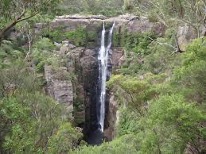
Waterfalls and springs emerge on or near the tops of mountains all over the world. Most people would not give a second thought to how the water got to this position and in such volumes. Clearly, this water volume is not rainfall runoff. This water is produced deep within the Earth and is pushed up under pressure to the surface through fissures. This water is the primeval water under constant production within the Earth.
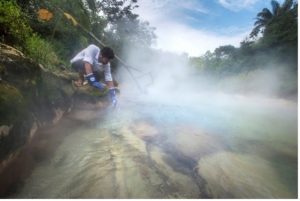
This is a thermal occurrence within a river in Peru in the Amazonian River system and the hot water that emerges in the river is a fault-fed hot spring from the Earth’s arteries that are filled with hot water that comes to the surface as geothermal manifestations. This water is heated up by Earth’s geothermal energy from deep within the Earth.
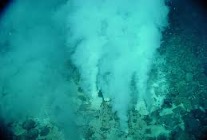
A hydrothermal vent is a fissure on the seafloor from which geothermally heated water from deep within the Earth that pores out, similar to a geothermal vent or waterfall on the land surface.

Rotorua region’s geothermal water is a continuous source of heated water from deep within the Earth. The hot geothermal waters are hailed for their healing properties and as cures for ailments such as sexual impotence, arthritis and rheumatism.
The existence of these continuous flows of water from the Earth cannot be linked to the hydrological cycle because their occurrence or location are from underground vents or fissures that are not recycling rainwater. However, public scientists do use this rainwater cycling theory to explain these waters. Moreover, the sea levels have been continuously rising over time due to the continuous production of water within the Earth. Scientists explain these rises away as the consequences of climate change, albeit that climate change is a continuous process on Earth.
Theory of the Expanding Earth
The origin of water on and within the Earth needs to be coupled with the theory of the expanding Earth, albeit that the theory is controversial among academics and particularly geologist who largely follow the continental drift theories by plate tectonics, along with a theory of a static Earth mass.
However, there seems to be general acceptance that the universe is expanding or accumulating, so why isn’t the Earth expanding or accumulating in unison with the universe, or is the Earth an anomaly? In 1929 Edwin Hubble, working at the Carnegie Observatories in Pasadena, California, measured the redshifts of several distant galaxies. He also measured their relative distances by measuring the apparent brightness of a class of variable stars called Cepheids in each galaxy. When he plotted redshift against relative distance, he found that the redshift of distant galaxies increased as a linear function of their distance. The only explanation for this observation is that the universe was expanding.
Once scientists understood that the universe was expanding, they immediately realised that it would have been smaller in the past. At some point in the past, the entire universe would have been a single point, and perhaps there was no Big Bang. The expanding universe is finite in both time (as we know it) and space. The reason that the universe did not collapse, as Newton’s and Einstein’s equations said it might, is that it had been expanding from the moment of its creation. The universe is in a constant state of change. The expanding universe, a new idea based on modern physics, laid to rest the paradoxes that troubled astronomers from ancient times until the early 20th Century.
Endersbee’s research led him to the research works of many scientists who promoted the Expanding Earth Theory, including Roberto Mantovani (1854-1933), Alfred Wegener (1880-1930), Otto Hilgenberg (1896-1976), and Samuel Carey (1911-2002, Prof. of Geology at the university of Tasmania).
However, other ideas about an expanding universe have been around for some time. Interestingly, Genesis 1: 9-10 had an expansion theory in this respect (ie. 9 And God said, Let the water under the sky be gathered to one place, and let dry ground appear. And it was so. 10 God called the dry ground land, and the gathered waters he called seas. And God saw that it was good). This statement could be interpreted as life emerging on the dry land from the sea life. On the other hand, the domain of natural sciences has different belief systems and consequently different agendas for explanation about how the universe and Earth functions. However, if we take the ideas about natural self-organisation, where the energy field matter forms mass, then it is highly probable that the Earth is expanding and the water volume within and on the Earth is expanding.
In geology, a supercontinent is the assembly of the Earth’s continental blocks or cratons to form a single large landmass. Supercontinents have assembled and dispersed multiple times in the geologic past. However, what would happen if the Earth grows or expands?
Seafloor spreading is a geologic process in which tectonic plates (large slabs of Earth’s lithosphere) split apart from each other. This occurs at divergent plate boundaries as tectonic plates slowly move away from each other. Eventually, the crust cracks, and hot magma fueled by mantle convection bubbles up to fill these fractures and spills onto the crust. This bubbled-up magma is cooled by frigid seawater to form igneous rock. This rock (basalt) becomes a new part of the Earth’s crust.
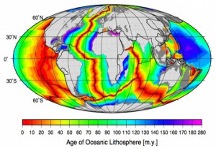
Expanding Earth Theory and Water Generation
Growing Earth or Expanding Earth hypothesis, suggests that instead of the super-continent theory, the planet has expanded from its original supercontinent that was the whole Earth’s surface or fitted together on a planet with a smaller volume, about 40% less mass than present.
The search continues for fossil evidence in Antarctica for ancient land vertebrates like those found on continents now separated from Antarctica by up to 3,200 km of ocean. In 1969, scientists found fossil evidence of the supercontinent Gondwana. Reptile bones found in Antarctica included a 200-million-year-old hippo-like creature called Lystrosaurus. The animal lived on the continental mash-up of South America, Africa, India, Australia and Antarctica that existed from around 600 million to 180 million years ago.
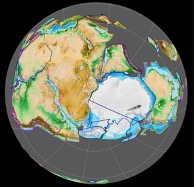
Over the centuries there have been a lot of theories about a hollow earth and an expanding Earth and how or what processes could cause a planet to grow. There is a theory that water is generated within the Earth’s lower crust or upper mantle and is often called primary or proton water and based on claims by Leonardo Da Vinci, Adolf Nodenskjold, Frank W. Clark, Svante Arrhenius, William Rubey, Stephen Riess, Michael H Salzman, Lance Endersbee and many others.
This water can be deep, often more than 300m to 3km underground in a never-ending source, as is the main water supply to Beirut from a bore in the adjoining eastern mountains. Scientists probing the Earth’s interior have found a large reservoir of water equal to the volume of the Arctic Ocean beneath eastern Asia. This seismic anomaly is under the Asia plate and within the mantle. Other such Earth generated water reservoirs exist within the Earth’s crust and mantle.
Given that the Earth’s oceans make up just 0.02 percent of the planet’s total mass, this means the vast crust and lower mantle could contain many times more water than floats on the planet’s surface.
The water distribution on the Earth is considered as follows:
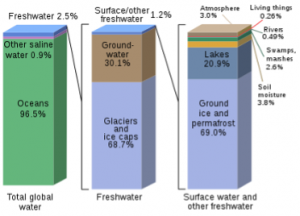
However, as discussed above, the potential volume of water within the Earth’s crust is missing from the calculations in the diagram above, yet its volume is potentially massively greater than that of the ocean; and most of it is fresh, mineralised water.
If our planet did not have the ability to store oxygen or water in the deep reaches of its crust, there would probably be no life on its surface. This is the conclusion reached by scientists at the University of Bonn who have subjected the mineral Majorite to close laboratory examination. Majorite normally occurs only at a depth of several hundred kilometres under very high pressures and temperatures. The Bonn researchers have now succeeded in demonstrating that under these conditions Majorite stores oxygen and performs an important function as an oxygen reservoir. Near the Earth’s surface the structure breaks down, releasing oxygen, which then binds with hydrogen from the earth’s interior to form water. Without this mechanism our Blue Planet might well be as dry and inhospitable as Mars is today. The findings of the Bonn-based scientists have been published in the journal Nature (doi:10.1038/nature06183).
Also, Japanese researchers say molten rocks deep in the Earth’s interior may be surprisingly wet. From laboratory experiments, they have concluded there may be more H2O deep underground than in all oceans, lakes, and rivers combined. The scientists first heated mineral cocktails to a white-hot 1600 degrees Celsius (2900 degrees Fahrenheit) and squeezed them until the pressure reached more than three million pounds per square inch (200,000 kilograms per square centimetres). Then they cooked the samples for an hour. The experiments replicated the environment and conditions deep in the Earth. Based on what they witnessed in their laboratory, the researchers concluded that more water probably exists deep within the Earth than is present on Earth’s surface: as much as five times more. Our results suggest that the lower mantle can potentially store considerable amounts of water, said Motohiko Murakami of the Tokyo Institute of Technology, where the experiments were conducted. The presence of water in the crystal structure of [deep-Earth] minerals would be expected to soften the minerals and change their flow behaviour, he added. That, in turn, could affect how the innards of the planet mix and shift over time, and could indirectly affect conditions and forces near the surface, such as plate tectonics.
Research undertaken by Stephen Riess in 1934 showed that enormous quantities of virgin (primary) water could be obtained from crystalline rocks. This involved a combination of geothermal heat and a process known as triboluminescence, a glow which electrons in the rocks discharge because of friction or violent pressure, that can release oxygen and hydrogen gases in certain ore-bearing rocks. This process, called cold oxidation, can form virgin or Earth generated water. Riess was able to tap straight into formations of hard desert rock of the right composition and produce as much as 8,000 litres per minute.
The Australian Academy of Science defines groundwater as the water that exists underground. While it can be present as underground lakes beneath the Earth’s surface, it’s more common that the water lies in the tiny spaces between grains of sand or bits of fractured rock. It’s a bit like the effect you’d get if you poured water into a jar of sand or pebbles – the water wouldn’t float to the top, but instead would settle in the spaces between grains, filling the spaces between sands or stones. That is, groundwater is considered by the Academy to be all water below the surface of the land. The problem with this definition is that soil water processes (say within metres of the surface) are quite different to water confined within a crystalline rock structure that might be 300-500m below the land surface.
Water on or near the Earth’s surface can be defined as follows:
- Atmospheric water is water vapour that comprises about 60% of atmospheric gasses.
- Seawater is water confined to the oceans or seas and represents the major component of water on the Earth surface.
- Land surface water is tied up in ice, dams, rivers or creeks, wetlands, ponds, etc, and often the most readily available water for drinking or reservoir storage. This water is a major part of run-off to surface reservoirs or flows and evaporation to the atmosphere.
- Soil water is all water within the soil system and confined between the upper most layer of soil (ie. the A horizon) and by either the uppermost clay layer (ie. soil C horizon) or rock strata. Most soil water is either transpired by plants or finds its way through lateral flows to the surface reservoirs or flows, eg. ponds, wells, creeks and rivers, etc. About 2% of soil water finds its way to the groundwater. Soil water is also the main salt transport system associated with salinity and this process is driven by soil health degradation (see papers at http://www.eric.com.au/html/papers_salinity.php)
- Groundwater is mainly water confined below the soil water between clay layers (aquitards in depositional systems) or rock strata in aquifers or fissures. This water can include buried rivers (paleo-channels, often at 100m deep) and unconfined aquifers that express water at the surface (ie. springs). Groundwater is the major source of water for bores. Groundwater is not the source of salinity as promoted by public science agencies.
Earth generated water is created within the Earth’s crust or mantle and found in the crystalline rock system often at depths greater than 300 metres (about 1,000 feet). This water is the source of all water on the Earth and eventually reaches the groundwater, soil water and surface through vents and unconfined aquifers. Therefore, this water can eventually become part of the hydrological cycle once extracted or when it finds its way naturally to the surface. Earth generated water is also known as primary water, juvenile water and proton water.
The hydrological cycle primarily involves atmospheric, surface and soil waters. Groundwater is replenished mainly from Earth generated water (a variable rate based on flows within fissures, pressures, depth from surface, bore extractions, etc.) and 2% from surface or soil waters. The amount of Earth generated water available is unknown and not part of any public water accounting system, or public science theories. However, this Earth generated water source is potentially massive and significant in water access and usage terms.
Anyone involved in groundwater exploration knows that in rural areas divining or dowsing finds most groundwater and Earth generated water. The success rate of divining is high compared with traditional hydro-geological techniques that rely on geological structures to target locations. I have personally found that the combination of geophysical mapping, field observation and divining is the most reliable approach to groundwater and Earth generated water exploration.
Earth generated water supplies are providing huge volumes to many urban areas around the world and these sources continue to flow at the same rates over centuries/decades, eg. Beirut’s water supply comes from bores in the mountains of Lebanon and similarly water is provided to Damascus through continuously flowing bores.
Earth generated water as fractured rock water is potentially the greatest source of sustainable water supply. However, this does not suggest that this water can be pumped at higher rates than can be sustained by pressure that moderates the flow rates. All groundwater or Earth generated water bores need to be assessed for sustainable flow rates (a rate that has no draw down, or the draw down level is recovered prior to further pumping).
The shallow groundwater system, along with surface supplies from rivers/ dams, etc. is at greatest threat from over exploitation. However, this water should not be accounted in the same manner as Earth generated water that is infinitely greater in volume and a major source of supply to the shallow groundwater system where most bores access these waters. Earth generated water is the least of all fresh waters sources that are exploited for human and animal consumption.
Water from the atmosphere (13,000 cubic km) is another major source of water that can be used as new water.
Toward a New Hydrology
Conventional hydrology speaks of a static supply of water created once early in the Earth’s history being constantly recycled. Stephan Riess saw new additions of water flowing vertically, from beneath the surface adding to the hydrologic cycle. This water in turn, becomes bound up on the surface partially in plants, sediments and subduction zones on its way back to the Earth’s mantle.
These new additions occur frequently where there is faulted, igneous and metamorphic rock and can be intercepted to replace contaminated supplies and provide new sources of water in arid areas. Riess’ concept of Earth-generated water adds a new dynamic to the science of hydrology.
Water from the Trinity Springs of the Idaho (USA) batholiths rises under its own pressure from an isolated, ancient source through the faulted granite quartz formations. The spring water spends time inside the Earth at temperatures exceeding 300F and surfaces at its source at 140F after travelling from a depth of many kilometres underground.
Ongoing research on the Trinity Springs water has revealed an interesting geochemistry and remarkable recharge/discharge and travel mechanisms for these thermal waters unlike any other water source in the region. The scientific investigation continues in laboratories specially equipped for high pressure experiments and with new techniques for isotope analysis.
Stephan Riess, through his study of mine flooding, developed a science of locating flows of Earth-generated water. These waters which often deposit minerals and flood out mines, occur worldwide as spectacular springs and are even more accessible by drilling into hidden rock structure. The Riess Institute’s scientific application of petrology, mineralogy, structural geology, aerial reconnaissance and remotely sensed data, offers new water for a thirsty world.
Several active Riess wells today are:
- Escondido, California: Riess and his successor, Morad Eghbal, each located several wells in the late 1970’s on private property both for the personal use of the owner as well as for the commercial water development for surrounding towns that needed to purchase water. These wells are in operation and producing today.
- Cottonwood, Idaho: The city of Cottonwood was running out of water and the traditional, professional geologists the city had hired to find water declared that there was no hope of success. The city then turned to Stephan Riess who immediately located two wells for them. The first generated more than 600 litres per minute. The second well produced over 1,200 litres per-minute. At the city’s request, Riess returned to locate a third well for Cottonwood’s future expansion. This well produced over 1,200 litres per minute. All three wells continue to supply the city of Cottonwood today.
Conventional water locators pick a spot to drill, looking for an aquifer or saturated zone in the overburden. Recently, with sophisticated airborne geophysical and satellite data groundwater and Earth generated water can be in rock using a technique called fracture trace analysis. Large fractures are identified through analysis of the airborne and satellite data for exploratory drilling. An example of this technique can be viewed at http://www.eric.com.au/docs/products/assessments/eric_ground_water.pdf
The Riess method uses mineralogy, petrology and structural geology precisely to locate high pressure/low temperature hydrothermal systems that have previously been encountered randomly by engineers in mine and tunnel flooding incidents.
Historically, all water is believed to come only from the hydrologic cycle. Yet, a growing body of evidence suggests that water might be generated deep within the Earth in great quantity. The Riess Institute at its Totten Field Laboratory, over the last decade, has drilled, collected and tested waters captured from great depths in several bore holes. Totten well 3, at 2,000 metres, is known to be the deepest 10cm cored water research well in the continental US. Results from Totten 3 now indicate some waters there may not be part of the hydrologic cycle at all, but rather from deep-seated geologic interaction within the Earth’s interior.
The Riess Institute identifies the dynamics of new water generation deep within the Earth’s interior, which, after rising to the surface, is added to the Earth’s hydrosphere. This vertical component of our model is linked to the horizontal components of water distribution (i.e. hydrologic cycle and theories of watersheds). As such, the Institute can obtain specific water signatures which identify sources of waters originating from deep within the Earth.
An indicator of Earth generated water is the presence of microbes at considerable depths in the Earth’s crust. Microbes of various species have been found in boreholes up to 5km deep in the crust. Microbes are living and require water to survive and replicate. While microbes at the Earth’s surface can produce energy due to the presence of light, surface water, organic matter and oxygen; the deep rock microbes feed on hydrocarbons and rock minerals.
These heterotrophic microbes are anaerobic, replacing oxygen with nitrate, sulphate or metal ions and generating myriad waste products for other microbes to feed on. The most common deep rock microbes are autotrophy as they make their own food, using rock as the main energy source. It is the intense heat and pressure at these depths in the crust, that chemical processes generate energy-rich inorganic molecules for microbes to break down and produce energy (ie. chemolithotrophs: chemical rock eaters).
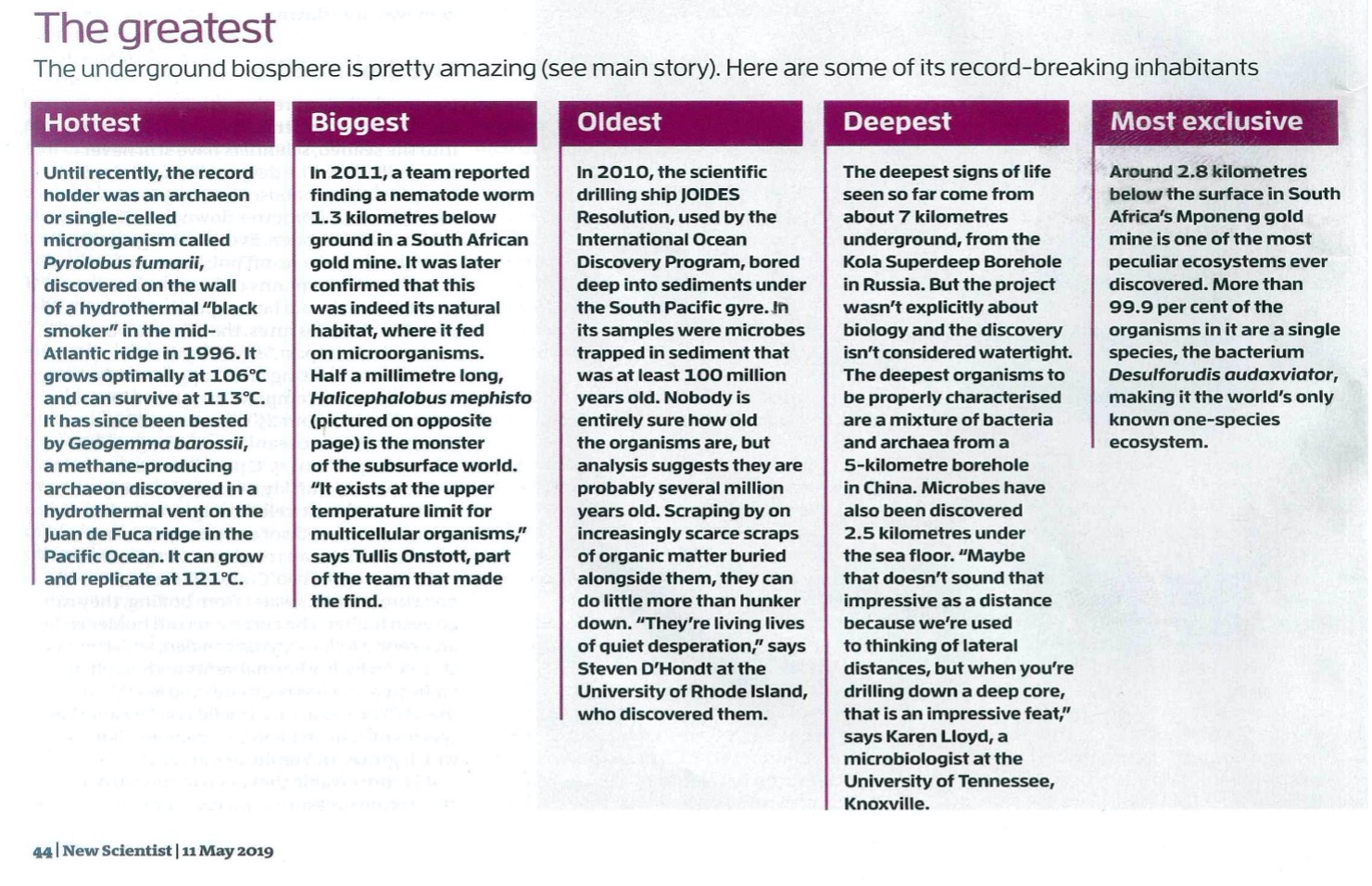
It is the presence of microbes in the Earth’s crust that has led to the theory that life on Earth may have started underground, due to the presence of a deep-water supply, and this life ultimately spread to the Earth’s surface. Consequently, the microbes on the Earth’s surface share the same genetic code and biochemistry as the deep rock microbes.
Therefore, if microbes can exist at these depths in the Earth’s crust (see table on page 14; New Scientist, 11 May 2019), then there must be a source of deep, Earth crust water for microbes to survive and flourish.
As this deep, Earth generated water spread to the Earth’s surface, it formed surface water systems (eg. ocean, swamps, lakes, etc.) and this gave rise to the hydrological cycle. It was this water cycle that ultimately changed the Earth’s surface, the formation of precious gems and atmospheric conditions for life, and these conditions are dynamic and changing all the time.
However, most planetary scientists, geologists and hydrologists are still stuck on theories that:
- Water arrived on the Earth from asteroids
- The total amount water on the Earth was present in the Earth’s centre from the beginning.
These theories persist because scientists, geologists and hydrologists cannot accept that the Earth is dynamic like every other planet and moon that has or had water, and these terrestrial bodies have an innate capacity to generate water from early minerals and isotopes; and that the Earth is expanding.
Mapping Earth Generated Water
During the period from 1992-2003, Robert Gourlay as Chief Scientist of Environmental Research and Information Consortium Pty Ltd (ERIC: www.eric.com.au) researched, developed and applied new techniques in mapping deep Earth generated water sources.
ERIC used a wide range of digital data sources including magnetic, gravity, gamma-ray (radiometric), satellite reflectance, satellite thermal, satellite radar, digital elevation models (DEM).
These data sets can be integrated in a classification process to produce composite data sets that reveal spectral and spatial coherent patterns that would not otherwise arise in a single data set. Other mapped data can be incorporated for map overlay (ed. Cadastre, DEM, existing groundwater bore sites and capacities, etc.) These services are now provided by the Gourlay group pf companies, trading as Phi’on (www.phion.com.au)
ERIC and Phi’on scientists have located well over 2,000 groundwater bores in Australia since about 1995. In many cases, these bores were drilled below 300m and produced water volumes in excess of 50,000 litres and up to 250,000L per hour. This volume of water has enabled many farmers to drought proof their commercial ventures and continue trading profitably during the drought.
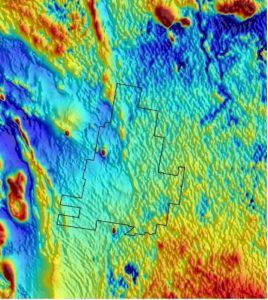
Pictured is an example of a hydro-map derived from digital magnetic data that highlights the underlying rock fracture system. The fractured rock system within the deep blue colour is the most likely source of large volumes of Earth generated water.
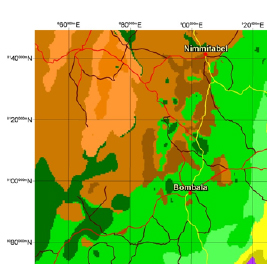
Pictured is a classification map derived from the integration of digital magnetic and gravity to determine potential areas for deep groundwater exploration, usually on the boundaries of patterns and along major fracture systems (ie, a NE to SW trending fracture dividing the major land system patterns in this image)
The precise location (ie. within 500 cm) for drilling a bore hole can be confirmed through a process of expert dowsing or divining, based on targets detected in the maps.
The supply of water to rural communities and enterprises has escalated to crisis levels during the drought of 2018-2019 to the point where many families and business have runout of water for stock and domestic purposes. State and Local Governments have no longterm solutions, and the situation is getting worse for regional water and food security.
The over-extraction of water from the surface water systems, eg. rivers and shallow bores have dramatically depleted surface water flows. For example, during Australia’s drought in 2019 over a million Murray cod and other fish species died across a 40-kilometre stretch of Darling River at Menindee, with the New South Wales State Government confirming fish deaths at Lake Hume.

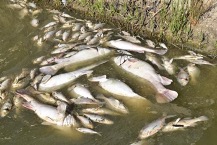
Consequently, the water management practices of some upstream areas really need to change immediately so that these fish die-offs do not occur in the future. The conversion of farming practices from accessing surface or shallow water supplies to deep, Earth generated (perpetual) water is the key to sustainable farming. This includes the domestic use of clean water by farming families.
Restructuring Drinking Water
Access to water is one global issue and equally, access to pure (unadulterated) water is another issue. About 99.9% of water that people are drinking globally, is de-structured, lifeless water that does not properly support cell regulation and healing. There are two types of water;
Structured water: water from pristine, flowing (moving) sources. This is the water that our ancestors drank directly from flowing water systems. This water is in a six-sided crystalline structure and carries a negative charge (mV)
De-structured water: water that is held in man-made structures (tanks, dams, pipes, etc.). is often contaminated and adulterated with fluoridation and chlorination and has a five-sided crystalline structure with either a neutral or positive (+) charge. Structured water can revert to de-structured water within 60 hours of removal from its pristine and flowing form (ie. stored in a tank, reservoir, pond, dam, etc.)
Consequently, all water for drinking and food production needs to be supplied in a structured (negative charge) form to support life to its fullest potential.
Robert Gourlay developed the unique Magnetised, Energised and Activated (MEA) water devices. Robert is the Chief Scientist of Resonate Research Pty Ltd that has been granted 4 Innovation patents from the Australian Government for the MEA devices. These patents cover the capacity of the devices to produce water that permanently holds a natural negative charge (natural structured water), eliminates pathogenic microbes (eg. E. coli in raw milk and water), activates electrical capacity of microbes (eg. in soil and water) and can permanently hold and transfer to water natural healing frequencies.
Structured water is water that has been activated or energised to permanently hold a negative voltage (- millivolts). Water structuring occurs in nature when water moves in a natural flow of vortexes (left and right turning or anti-clockwise and clockwise turning). Most wild (pristine) rivers and some springs produce structured water in the presence of sunlight energy and natural biological conditions. Electrical stormwater is in an energised, negative voltage form before it hits the ground, air particles (eg, smog) or a surface. Some spring waters are also energised through contact with magnetic forces in the groundwater rock strata.
Most water that humans and domestic animals now utilise is toxic. This toxic water includes rainwater that is exposed to air pollution, soil water contamination (soil water for plants), and water held in dams, tanks and pipes. The limited availability of clean, structured water is now a major limitation to a healthy life.
Phión (www.phion.com.au) has patented water devices (www.meawater.com) to produce a permanent negative charge in water. Daily consumption of this negative charge or structured water activates cell negative charge due to a higher rate of cell hydration (ie. the smaller cluster of water molecules in structured water enables water entry through the cell membrane). All life has cells that operate at their highest potential when the cell charge is negative (usually about -50mV or above). That is, cell capacity for regulation, healing and renewal is at its fullest potential (anti-aging).
The Phión water technologies restore and energise water and enable water to dance a vortex frequency that frees or neutralises the water of its past, vibrational memory (ie. from exposure to human made toxins in the soil, water bodies and air) and reorganise the molecular structure of the toxins into life giving molecules or elements. That is, the water returns to its natural, structured state where it is free of its toxic load. Water in human-made structures, such as dams, tanks, pipes, ponds, etc. can be restructured and energised through Phión technology that replicates water cycling (vortex) processes in nature.
All disease starts when the cell charge of all living species changes polarity to a positive charge. This is the cell state when it loses its protection and integrity. That is, it has lost its life-force energy (syntropy force) and the decaying forces (entropy) are in full flight.
Animals and humans can spend a huge amount of energy on the transformation of liquid from a positive charge, unstructured state, to a negative charge structured state for cells to sustain homeostasis through constant regulation and healing (about 1 billion instructions every second).
The use of a MEA structured water device for water that we consume and use on our gardens, removes the need for our body to expend additional energy on transforming the water to a structured state. No body processes, starting with digestion, can proceed without our body processing positive charge water and food, to a negative charge.
It follows that usually about half of the body’s energy expenditure is wasted in the transformation of positive (+) charge liquids (including liquids in food). Theoretically it is possible to almost halve the nutrient intake by animals and humans, provided that negative (-) charge structured water is consumed instead of normal (urban) water.


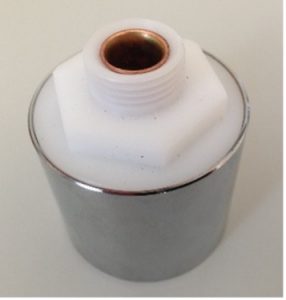
Pictured: Bottle top and under-sink, shower and outdoor tap and sprinkler devices.

Pictured: an inline device with ½”, ¾”, 1”, 1 and ¼”, and 2” inner diameters.
The MEA water website at www.meawater.com provides over 20 essays written by Robert Gourlay (Chief Scientists of Phión) about structured water and the experiments undertaken by Phión’s research companies to prove MEA water devices will restructure water to hold a permanent negative charge (-mV).
While public research on water structure commenced in the 19th century, many of the unique properties of water are still unanswered. There is already an understanding that water molecules form an infinite dynamic hydrogen-bonded network with localised and structured clustering. The network of this bonding can be in millions of angles and connecting points to form a crystal and therefore crystals are dynamic, distinct and unique. When water freezes to ice it forms a solid-state, comprising a six-sided, hexagonal, crystalline structure (see images below). These structures also form in crystal water (structured water).
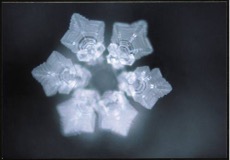
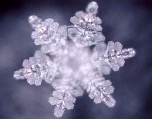
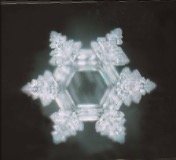
The experimental results outlined below demonstrate the following major differences between the Phión Syntropy Water and other commercial forms of structured water.
| Phi’on Syntropy Water | Other commercial forms of structured water |
| Holds a permanent negative (-mV) charge | Not claimed |
| Sustains increased surface tension | Not claimed or claims a low surface tension |
| Sustains natural preservative properties | Not claimed |
| Sustains a permanent light blue colour | Not claimed |
| Progresses to a high energy status after initial processing | Not claimed |
| Eliminates pathogenic microbes in fluids (eg. raw milk) | Not claimed |
| Demonstrated synergistic relationship with beneficial microbial species in food production | Not claimed (albeit possibly demonstrated in some cases) |
Note: In the table above, Phión states a Not claimed opinion, based on information and evidence available on the websites of companies selling structured water devices.
Conclusion
Public science has ignored the concept and evidence of Earth generated water (deep groundwater) and failed to account for this water as a new water production source. The understanding, location and exploitation of this water has occurred outside of the public science system since about the 1940’s and is perhaps destined to remain that way unless public science commits to funding deep groundwater mapping to find new sources of this water production supply for farmers, villages and most regional towns; as a drought reserve. Otherwise the drought effects on food production, the profitability of food production and the environmental or ecosystem effects in rivers systems, will continue to worsen.
The current public science consensus is that Earth generated water (primary water) does not exist and that all groundwater is part of the hydrological cycle and exploitation of groundwater reduces surface water supplies (ie. flows in rivers). This scientific view is flawed and must be challenged through the existing evidence (eg. as presented by Prof. Lance Endersbee in his book A Journey of Discovery).
Ultimately, governments worldwide will have to access Earth generated water to sustain water production for human and animal consumption, as this groundwater along with atmospheric water are the only remaining new sources for thirsty populations. This is not to say that efforts to conserve water use should not be paramount in government planning. However, the utilisation of Earth generated water that is located within 100m to several kilometres of consumption areas (ie. urban and industrial centres) is more energy efficient to deliver than water piped over 10’s or 100’s km to consumers.
It can be expected that during the current global water supply crisis, public scientists will promote a policy that groundwater is a sacred cow and should be left where it is. However, governments and organisations that control water resources will have to make alternative decisions and take risks to explore for deep groundwater resources before the crisis cripples’ economies (particularly in the Middle East, Africa and Asia that can ignite a massive refugee crisis for Australia).
The discussion in this paper provides one approach to integrate the theories of Earth generated water with groundwater mapping science developed by ERIC (now Phi’on), along with the water restructuring technology outlined on pages 18-19, to provide potable quality water into the future.
